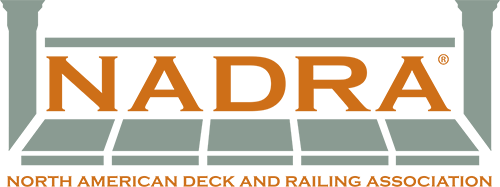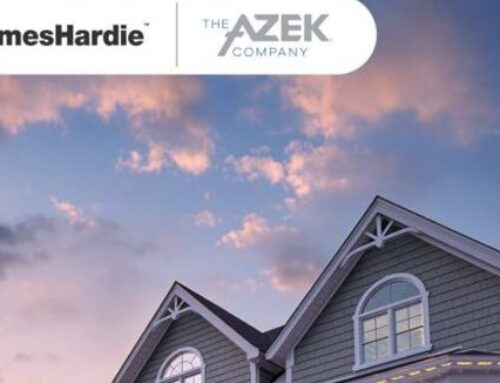I appreciated the opportunity to participate in the treated wood panel discussion at the recent NADRA meeting. It provided an opportunity to discuss recent changes to standards that have impacted not only how treated wood is recommended to be used, but have also encouraged more retailers to stock ground contact treated wood so that users can be less concerned about potential misapplication. Just as important was the opportunity for me to hear comments directly from builders on shortcomings of the treated wood that they have experienced. I believe that increased involvement of NADRA and other organizations representing retailers and users of treated wood in AWPA can result in continued improvement of standards and better treated wood products for users.
There are new rules for building decks and using treated wood. Just as the American Wood Council updated its “Prescriptive Residential Wood Deck Construction Guide” in 2014 with new recommendations and methods, the American Wood Protection Association (AWPA) has updated its standards with new information on how treated wood is to be used. As associations involved with developing code requirements or standards that are referenced in the codes, both are continually looking for ways to improve the methods and materials used in wood deck construction.
AWPA is recognized by ANSI as a consensus standard writing organization and its standards are referenced in the International Building Code and International Residential Code.
Products not specifically listed in AWPA standards often use ICC Evaluation Service product reports as a means to demonstrate that products comply with the requirements of the codes.
AWPA has updated standard U1 and now requires that for use of sawn lumber in certain above ground applications that are either (1) subject to ground contact type hazards or (2) critical to the structure and difficult to replace now be treated for ground contact. These applications include:
a) When there is a reasonable expectation that soil, vegetation, leaf litter or other debris may build up and remain in contact with the component.
b) When the construction itself, other structures or anticipated vegetation growth will not allow air to circulate underneath the construction and between decking boards.
c) When components are installed less than six inches above ground (final grade after landscaping) and supported on permeable building materials (e.g. treated wood or concrete).
d) When components are in direct contact with non-durable untreated wood, or any older construction with any evidence of decay.
e) When components are wetted on a frequent or recurrent basis (e.g., on a freshwater floating dock or by a watering system).
f) When components are used in tropical climates
AWPA M4 requires that treated wood that has been cut, drilled or damaged including abrasions or holes from removal of nails and spikes should be field treated with preservative. While this has seldom been done in the central and eastern United States, it has been common practice on the west coast and in Canada. Field treatment helps to protect the interior of the wood which has less treatment than the outer shell.
Preservative end cut solutions shall be used in accordance with the instructions and precautions listed on the product label. Acceptable end cut solutions for outdoor projects referenced in the M4 standard include:
(a) Copper naphthenate. Preferably containing 2.0% copper metal; 1.0% is OK if the higher in not available.
(b) Oxine copper. Containing a minimum 0.675% oxine copper (0.12% copper metal).
If suitable products cannot be found locally, an Amazon search for wood preservatives will give a number of options for copper naphthenate products. Using the link http://www.chemtch.com/outlast-q8-pressure-treated-wood will take you to the supplier of the oxine copper product in quarts, gallons or 5 gallon pails. While somewhat more expensive it is clear and has little odor.
AWPA M4 also requires that timbers used as columns should have an original factory end in the ground and that the top be field treated with preservative.
These changes to AWPA have encouraged many retailers to make ground contact treated wood available to their customers. Builders requesting ground contact treatment will help to ensure this practice continues and provide you with a supply of treated wood product that will be durable regardless of the specific application.
Stephen C. Shields
Steve spent over 43 years in the wood preservation industry with Koppers Company and successor organizations until his retirement as Technical Director of Lonza’s wood protection business in May 2016. He remains active in the industry, providing technical consulting services as the principal of Wood Protection Consulting, LLC.
He graduated from Pennsylvania State University in 1972 with a Bachelor of Science degree in Wood Science and Technology and from Akron University in 1982 with a Masters in Business Administration.
Steve’s experience includes sales and customer support for preservative and fire retardant products, product development and research, technical product and plant production support, quality control, code and standards development and technical writing. He has been an active member of many associations including the American Wood Protection Association (1984- ), International Code Congress (and predecessor code organizations 1985- ), National Institute of Building Sciences, Wood Protection Council (1990-93) and the Western Wood Preservers Institute (1994 – 2016).
His primary activities now focus on American Wood Protection Association standard development and task group activities and building code evaluation reports. He recently was awarded the American Wood Protection Association, Award of Merit for his service and contributions to the organization.





